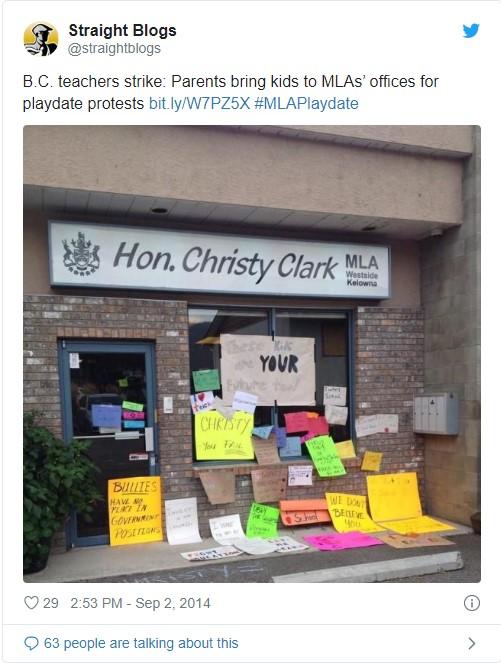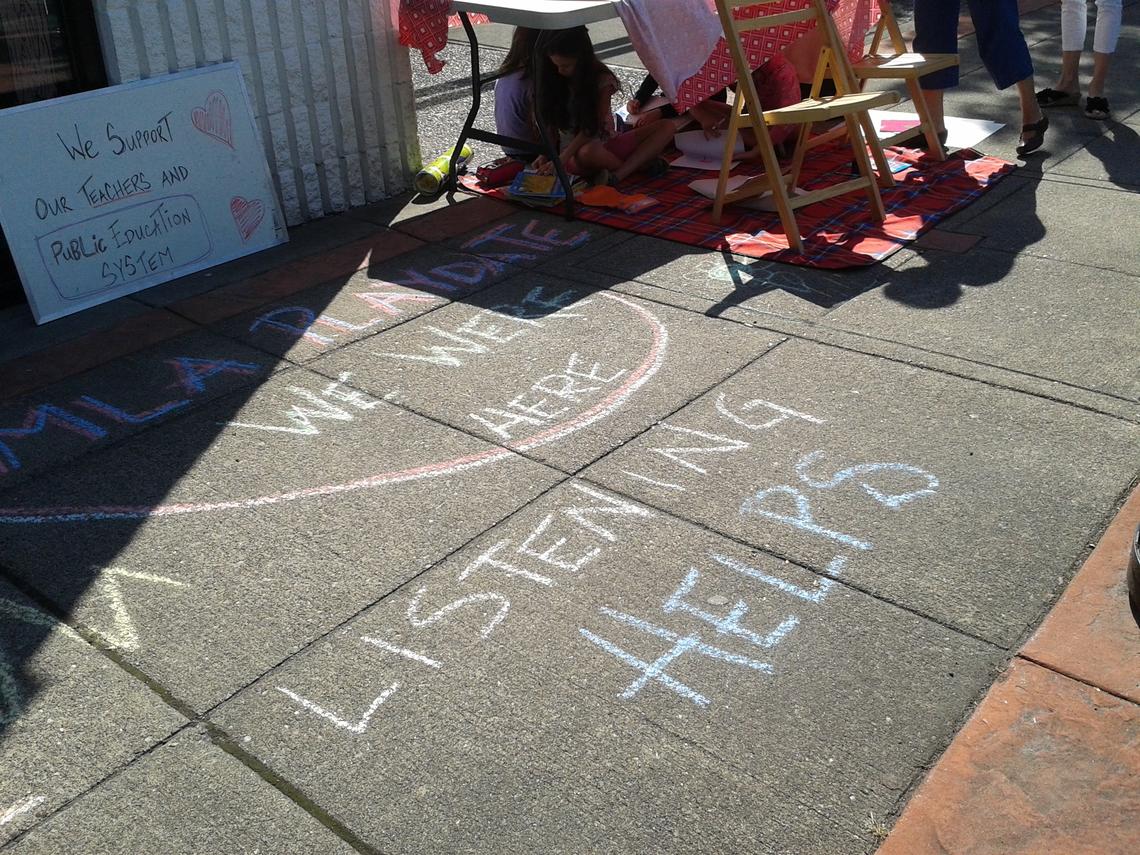April 14, 2020
Leading an online social movement requires offline work

Today, most social movements around the world are digital in some capacity. When a hashtag seems enough to start a movement, social media promise to replace the role of leaders in setting a movement’s goals, co-ordinating action and inspiring a following.
Our research set out to test the belief that leadership was no longer necessary in online activism by drawing on the experience of several recent movements in Canada. What we found was more complicated and interesting than a simple vanishing act by protest leaders: social media enable new kinds of leadership to form.
The ease with which messages spread through social media may be the most fascinating aspect of digital activism, but it hides the labour of message creation, curation and coordination required to transform chatter into action.
- Photo above: In 2015, Canadians across the country organized in support of Syrian refugees arriving in the country; these rallies were planned online. Photo by Mike Gifford/flickr, CC BY-SA
We studied Canadian movements over the past five years and found that leadership labour is performed by individual participants who aren’t necessarily identified as traditional leaders. These individuals work in the background rather than standing out in front lines and front pages. Day by day, hour by hour, they perform the painstaking tasks of articulating the message of the movement, connecting collaborators and supporters, or initiating action on the issue.
Crafting messages
During the 2014 teachers’ strike in British Columbia, some parents started pressuring the government to negotiate with the teachers’ union. One idea caught on: parents with children at home because of the strike would organize playdates at the local offices of politicians. The #MLAPlaydate initiative was born on Twitter and Facebook.

#MLAplaydate initiative
The idea itself was the brainchild of three citizens who took notice of each other’s tweets at the early stage of the strike. Backstage conversations through tweets, email and phone calls led to the creation of #MLAPlaydate. They broadcast their call through Twitter and a blog that described the format of their playful protest. What made the message powerful, they explained, was that:
It’s a way that anyone could play. You could play by tweeting, what we and others did. You can play by taking a meme or photo and commenting on it, so by making it, sort of like, open source activism versus traditional command and control … you allow other people to get more involved.

Chalk drawing in front of an MLA office in British Columbia during an MLA Playdate
Author provided
While the three had crafted the message, they saw themselves as a coordination hub rather than as leaders in control. They created spaces for discussion of parents’ views on the teachers’ strike and helped translate these discussions into action.
Online influencers
Crafting the message is not enough. The message must be picked up and circulated.
When causes are embraced by social media accounts with many followers, their involvement amplifies the message and boosts the collective action. In other cases, such accounts grow in popularity due to the dense network of connections their owners have in the local community.
The organizers of Missing and Murdered Indigenous Women (MMIW) events in Calgary were already embedded in local Indigenous communities and had ties to other activists through past work with Idle No More or Women’s Marches. They drew on these past connections and experiences to organize their own MMIW protests. They used Facebook to disseminate information and calls for action not only locally, but also to reach into the national network of Indigenous activists.

Chantal Stormsong Chagnon was one of the organizers of the MMIW mobilization in Calgary.
Mylynn Felt
These organizers were already in the thick of things locally and digitally. This leadership role consisted of spreading and sharing the movement’s goals and objectives, which they achieved through existing networks grown from involvement and commitment to the values behind the issue. Calgary Sisters in Spirit committee member Michelle Robinson captured it this way:
… our locations and our numbers can change, but Facebook is kind of a constant. So that’s where we encourage and invite people and let people know this is happening.
Doing the work
The word caretaker brings to mind the image of hands-on labour; with digital activism, this caretaking role describes a leader stepping up to do the work and investing time and effort in countless essential tasks. These leaders distinguish themselves by carrying out tasks such as making signs, sharing petitions or cleaning up after a gathering.
For citizens coordinating the Calgary network that assists arriving Syrian refugees with donated household items, participation in the Refugees Welcome movement took every free moment of the day as they did the heavy lifting online and offline. One organizer shared:
we would finish work and, no dinner, just head down to the warehouse from the time the warehouse opened ‘till closing. … we were there pretty much every single day.
These activities stretched them financially and personally, but their commitment kept them going. Nobody appointed or elected them. These individuals emerged as leaders when they stepped up to do the work that needed to be done.
Online leadership matters
What matters is crafting powerful messages, spreading this message across physical and digital networks and doing the heavy lifting of organizing work. In some cases, the same citizens performed all three leadership roles. In others, different participants stepped into one of them when needed. While the individuals playing these roles may sometimes appear interchangeable, transient and anonymous, leadership itself remains central to any form of activism.
There were no special qualities required to make an ordinary citizen a leader. What mattered was the degree to which they cared about the issue. For some, taking this kind of leadership role represented a peak in a long trajectory of activism and dedication to a cause. For others, the issue at hand struck a particularly sensitive chord or hit close to home. Then, the density of social ties, digital skills and communicative creativity turned into valuable resources.
This means that for activist organizations and social movements nowadays, it is not so important to focus on electing leaders, but on making available mechanisms and avenues for their self-selection. Build open channels for conversation, connection and work. Leaders will come.



